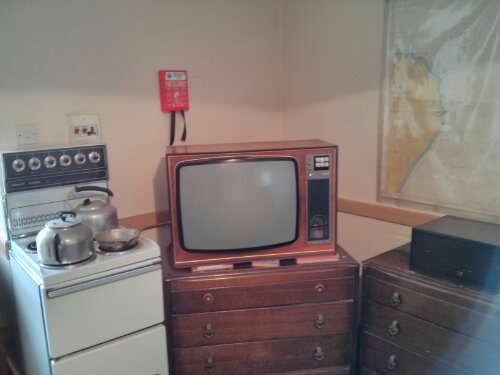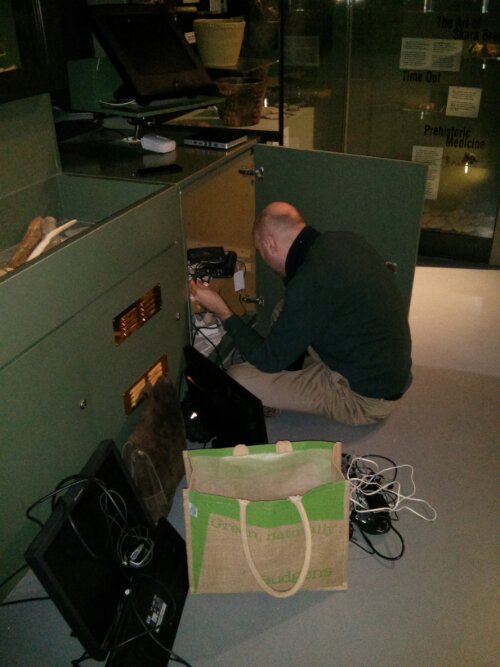The painted timber here was discovered hidden behind a partition. It is a rare survival. Monitoring relative humidity levels will inform how to control the heating to prevent the paint flaking from the doors and panelling.
Category Archives: Uncategorized
Tapestry (really embroidery)
This modern but valuable artwork was coming to visit. Integrated Pest Management was in place and had identified the presence of carpet beetle larvae. The room was fogged with Constrain, a conservation grade insecticide, and the heating was turned down. Both actions will seriously deter pests from approaching the textiles. Sticky pest traps will confirm the efficacy of the preventive works.
Slaters & Slater Spiders
This insect trap has caught some slaters some slater spiders. This is a sign of a reasonably damp environment not necessarily a problem as neither slaters all these spiders will damaged the textiles in this historic building. If we had clothes moths, carpet beetles or woodworm then there would be more cause for concern.
Church Heating Trial
We have put in a temporary electric heating system to see if we can control humidity levels. Three electric heaters are enough to keep humidity levels to a level where mould woodworm and similar problems won’t occur. The Hanwell humidistat controls all three radiators using temporary cables. Perhaps one day the victorian heating system will be reinstalled.
New Display Case
This case is protecting archaeological objects from potentially high relative humidity. We’re looking to see if the silica gel is effective enough in it’s own or whether the heating in the museum needs to be adjusted. The airtightness of the case needs to be assessed, as does the amount and type of silica gel.
Background Church Heating
This church stays closed all winter but can’t just be left without heating. Equally it’s Victorian heating system is no longer working. An effective but temporary fix is to install a few electric heaters on humidistat control. This has effectively improved conditions in the church without much effort or expense. Data loggers record how effective it is.
Lighthouse
This is now a museum and the lighthouse keeper’s accommodation is now a 1970’s time capsule. It can’t just be left to decay so a humidistat controlled radiator has been installed. This also keeps the place a little warmer than normal during the shoulder months as there is a temperature boost button on the controls. It gets quite cosy but the telly doesn’t work any more.
Fog Horn Engines
Classic Car Conservation
This 1955 Daimler came into care at the same time as the house and garden. It’s being keep in a protective bubble known as a CARCOON that protects it against dust and changes in relative humidity. It’s a good move from a conservation point of view and a good talking point. There’s a little bit more work to do though in optimising relative humidity levels.
Wet Stone
Unusual Conservation Heating
This little museum is suffering from high relative humidity meaning that some of the collection has had to be taken off display. We installed two electric radiators and a blade-less fan to push the warm air around silently and efficiently. A humidistat controls the radiators. Environmental monitoring will confirm whether we have solved the problem.
Monitoring System Upgrade
a Meaco environmental monitoring system has been faithfully recording data in this exhibition since 2007. It still works but the computer running the system is getting slower and slower to the point where it needs to be changed. This is quite involved as it means a new computer, update of Meaco software and update of Windows from XP to 8, all the time ensuring that no data is lost and that the older telemetry sensors work on the new computer.












